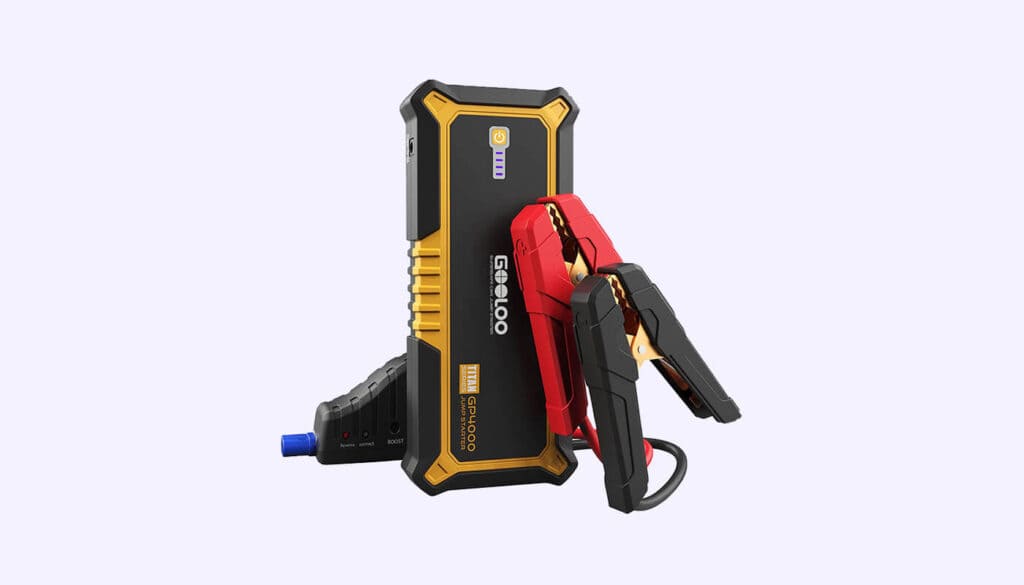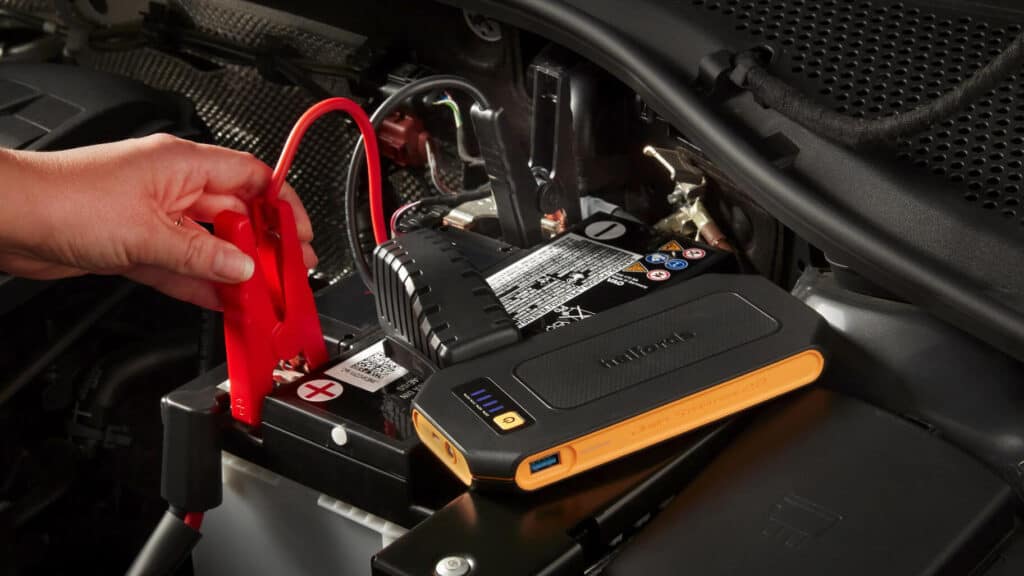Introduction: The Convenience and Cautions of Using a Portable Jump Starter
Imagine the relief of not having to flag down a stranger when your car battery dies. A portable jump starter can be your saving grace, allowing you to get back on the road quickly and safely. But like any tool, it comes with its set of precautions. Incorrect use can not only damage your vehicle but also put you at risk. This article aims to guide you through the nuances of using a portable jump starter effectively and safely.
Is a Portable Jump Starter Worth the Investment? A Look at Benefits and Drawbacks
When it comes to solving car battery woes, portable jump starters are like the Swiss Army knives of the automotive world. They’re compact, versatile, and incredibly useful in a pinch. One of the standout advantages of having a portable jump starter is the sheer ease of use. You don’t need to be an auto expert to figure out how to connect a couple of clamps to your car battery. The instructions are generally simple, and many modern jump starters even have safety features to protect you from mistakes, such as reverse polarity protection and spark-proof technology.
But the benefits don’t stop there. One of the most significant perks is autonomy. With a portable jump starter in your trunk, you no longer have to rely on the kindness of strangers or worry about being stranded in a deserted area. It empowers you to take control of the situation and gets your vehicle up and running in no time. Plus, many contemporary models come with extra features like USB ports for charging your gadgets, air compressors for inflating tires, and LED lights for night-time emergencies.

However, life is about balance, and portable jump starters are no exception. While they offer convenience, they can also make a dent in your wallet. High-quality models often come with a hefty price tag, and even after the initial investment, there’s the upkeep to consider. Like any other battery-powered device, they need regular charging to remain effective, even if you haven’t used them in a while. Additionally, they’re not universally suitable. A jump starter that works wonders on a compact car might not deliver the same performance for a large SUV or a truck. Compatibility with your specific vehicle is something to check before making a purchase.
Choosing the Right Portable Jump Starter: Features and Specifications
• Peak Amps: A jump starter’s effectiveness is often measured by its peak amps, indicating the maximum current it can deliver. A higher peak amp rating generally offers better performance.
• Battery Type: Most jump starters use either Lithium-ion or Lead Acid batteries. Lithium-ion models are more compact but may offer less power, while Lead Acid models can offer more oomph but at a heavier weight.
• Multiple Charging Ports: Look for jump starters with multiple USB or DC ports. These can be a lifesaver, allowing you to charge smartphones, laptops, or even portable coolers.
• Spark-Proof Technology: Safety first! Choose a model that offers spark-proof clamps to avoid accidental sparks, which can be dangerous.
• Reverse Polarity Protection: This feature prevents damage to your car’s battery and the jump starter in case the clamps are accidentally attached to the wrong terminals.
• Additional Features: Think about what bells and whistles you might need. Some models come with a built-in air compressor for tire inflation, or an LED flashlight for night-time emergencies.
Safety First: Do’s and Don’ts of Jump-Starting Your Car
• Read the Manual: Always, always read the instruction manual of the jump starter and your car’s owner’s manual. Familiarize yourself with the specific jump-starting procedure for your vehicle.
• Identify Terminals: Before connecting anything, locate the positive (+) and negative (-) terminals on your car battery and the jump starter.
• Correct Sequence: Always connect the positive clamp to the positive terminal first, followed by the negative clamp to a ground or the negative terminal.
• Never Cross Wires: Never let the positive and negative clamps touch each other, as it can lead to sparks or even a fire.
• Well-Ventilated Area: Perform the jump-starting process in an open, well-ventilated area. Batteries emit hydrogen gas, which can be combustible.
• Keep Flames Away: Ensure there are no open flames or cigarettes nearby when you’re jump-starting. Batteries contain flammable materials that could ignite.
If you’re still in doubt or run into problems, don’t hesitate to seek professional assistance.
Jump Starter vs. Battery Charger: Which One Suits Your Needs?
• Quick Fix vs. Long-term Solution: Jump starters are designed for quick fixes. If your car battery is dead and you need to get back on the road immediately, a jump starter is your go-to. Battery chargers, on the other hand, are built for longer-term solutions. They take time to recharge your battery but offer the advantage of a more prolonged fix.
• Portability: Jump starters are generally compact and designed to be easily stowed away in your car. Battery chargers can range in size, but the more powerful ones tend to be bulky and less convenient to carry around.
• Required Power Source: Jump starters are self-contained units that hold a charge. Battery chargers require an external power source, usually an electrical outlet, to replenish your car’s battery.
• Versatility: Many modern jump starters come with added features like USB charging ports for your mobile devices, air compressors, or LED flashlights. Battery chargers are typically more specialized and focus solely on the task of charging.
• Compatibility: Not all jump starters are suitable for every type of vehicle. Larger vehicles like trucks and SUVs may require jump starters with higher peak amps for effective starting. Battery chargers also have various models, but their effectiveness generally depends on the time you have rather than the type of vehicle.
• Safety Features: High-quality jump starters often include safety features like spark-proof technology, reverse polarity protection, and even overload protection. Battery chargers can also have safety mechanisms, but these are generally focused on preventing overcharging.
• Cost Factor: Jump starters can be more expensive upfront, especially the models with additional features. Battery chargers are usually less costly but might lack the bells and whistles that come with some jump starters.
Storage and Maintenance: Can You Leave a Jump Starter in the Car?
Convenience speaks volumes, and having a portable jump starter within arm’s reach seems like a smart idea. But here’s the caveat: your car’s trunk is not the most hospitable place for electronic gadgets. Prolonged exposure to extreme temperatures—either too hot or too cold—can degrade the battery and electronic components of a jump starter. Manufacturers typically advise storing these devices in cool, dry conditions.
So, if you’re planning on keeping your jump starter in your car, you’ll need to take extra care. Make a mental (or actual) note to regularly check the device’s battery levels. Many modern jump starters come with indicators that alert you when a recharge is needed. Remember, a poorly maintained jump starter is just as useful as a paperweight. Regular maintenance checks will help you keep this invaluable asset in tip-top shape, ensuring it’s there for you when you need it the most.

Alternatives to Portable Jump Starters: What Other Options Are Available?
If portable jump starters were superheroes, then jumper cables would be their sidekicks—less glamorous but dependable. These trusty cables are less expensive and can fit into nearly any glove compartment. The catch? You’ll need a second vehicle to jump-start your car. On the other hand, we have portable battery chargers. These are the ‘slow food’ movement of the car battery world. They charge your battery slowly but surely, demanding that you have access to a power outlet and the luxury of time.
However, both these alternatives have their pros and cons. Jumper cables are inexpensive and lightweight but rely on another vehicle for the much-needed boost. Portable chargers, although reliable, aren’t much help in an immediate crisis. Your best bet is to weigh the scenarios you’re likely to encounter and choose an option that best suits your individual needs.
Conclusion: Maximizing the Use of Your Portable Jump Starter: Final Thoughts and Recommendations
A portable jump starter can be a lifesaver, granting you autonomy and sparing you the awkward dance of flagging down a stranger. However, to get the most out of this useful device, it’s crucial to understand its limitations and maintenance needs. Choose wisely, follow safety guidelines, and keep it in tip-top shape to ensure it’s there for you when you need it most.
For those times when your car troubles go beyond a simple jump start, remember that help is just a click away. With Uchanics, you can book a mobile mechanic service that brings solutions right to you. Why wait? Book an appointment now and make sure your vehicle gets the attention it deserves.
